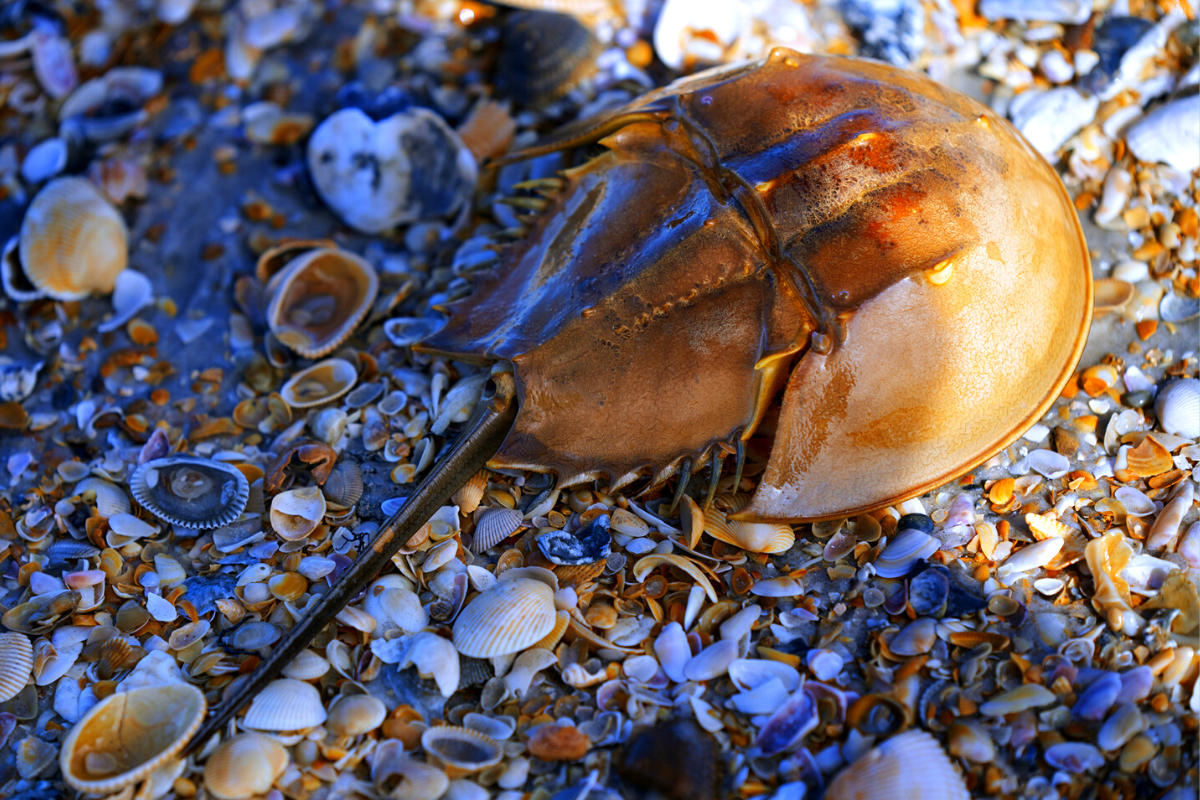The Connecticut General Assembly has voted to save the state’s horseshoe crabs and the wildlife who depend on them for survival. On May 30, the Senate passed HB 6484 35-0. The legislation prohibits the hand capture and killing of horseshoe crabs from the waters and shoreline of the state. It passed the House unanimously 146-0 on April 27.
The bill, which Friends of Animals helped draft, now heads to the governor to be signed and will go into effect Oct. 1.
“Hope has arrived. Finally, Connecticut is drawing a line in the sand to stop the seasonal killing of horseshoe crabs along our shoreline,” said Priscilla Feral, president of Darien-based Friends of Animals. “CT’s quota for chopping up horseshoe crabs only to bait eel and whelk pots is a staggering 48,689 crabs each summer. The success of this legislation gives horseshoe crabs a fighting chance to recover from decades of exploitation.”
Feral pointed out that it’s gratifying to see a wildlife protection bill remain intact, have such overwhelming support and move so quickly through the legislature.
“It’s a testament to state Rep. Joe Gresko, who introduced the clear, concise bill and whose genuine love for these ancient mariners gave the bill the energy it needed,” she said. “We worked together to make the General Assembly understand that horseshoe crabs are already functionally extinct in Long Island Sound, which means they no longer play an effective role in their ecosystem, and that Connecticut needed to stop the reckless, unnecessary killing of horseshoe crabs for bait so people could eat smoked eel and conch fritters.”
On the House floor, Rep. Gresko, who first became enamored by horseshoe crabs as a kid while watching them “right” themselves with their tails at Short Beach in Stratford, dedicated the legislation to the late Dr. Jennifer Mattei. Mattei was a member of the International Union for the Conservation of Nature’s Horseshoe Crab Specialist Group, who Connecticut was lucky to have as a biology professor at Sacred Heart University. Mattei founded Project Limulus, a citizen-science project examining the ecology of the Long Island Sound horseshoe crab population. Her work over the past two decades led us to this point, Gresko said.
“As Connecticut continues to make improvements to Long Island Sound, the wellbeing of horseshoe crabs is a benchmark that will hopefully now improve with the passage H.B. 6484. These living fossils have survived millions of years, so left alone, I’m confident they will return in numbers,” said Rep. Gresko. “By safeguarding horseshoe crabs, we strengthen our marine food web for generations to come.”
CT DEEP had revised regulations during the 2022 season, which still allowed approximately 15 permit holders to kill 150 horseshoe crabs per day from May 22-July 7, excluding weekends and five days around the full moon in June. That means theoretically that each license holder could still kill a staggering 4,350 individuals each summer.
The Atlantic Marine Fisheries Commission downgraded the stocks of horseshoe crabs in the NY region, which includes Connecticut and the Long Island Sound, from Neutral to Poor in 2019. Local bans are already in effect in Westbrook, West Haven, Milford and Stratford.
Migratory birds need to eat horseshoe crabs’ eggs, especially the threatened red knot. In 2021, fewer than 7,000 red knots were found in the Delaware Bay, a key spring stopover habitat. That’s less than a third found in 2020. And red knot numbers remained at historically low levels in 2022. New Jersey banned the killing of horseshoe crabs in 2008.
Without sufficient horseshoe crab eggs to feed on, migratory birds run out of energy and die before reaching their breeding grounds. Horseshoe crabs are also an important source of food for other wildlife such as sea turtles, and species such as anemones, barnacles, oysters and seaweed use horseshoe crab shells as homes.
“Horseshoe crabs have figured out how to harmonize with the environment to last half a billion years. Humans can really learn a thing or two from them,” said Feral, who is anxiously awaiting her annual horseshoe crab watch on local beaches around May 23.
Horseshoe crabs spawn in mid May and early June, during the high tides three days before and three days after the new moon and the full moon. Female horseshoe crabs come ashore, where the males are waiting. Time to lay the eggs—20,000 or more a night and as many as 80,000 in each mating season.
“I look in three spots in Rowayton, where I live. Usually I’ll see maybe two each day; if I keep looking, I might see several more another day,” Feral said. “If you find a horseshoe crab on the beach this summer flipped over, offer this ancient mariner a hand by turning it over so they can fulfill their vital role as a dominant species of the Long Island Sound ecosystem.”

